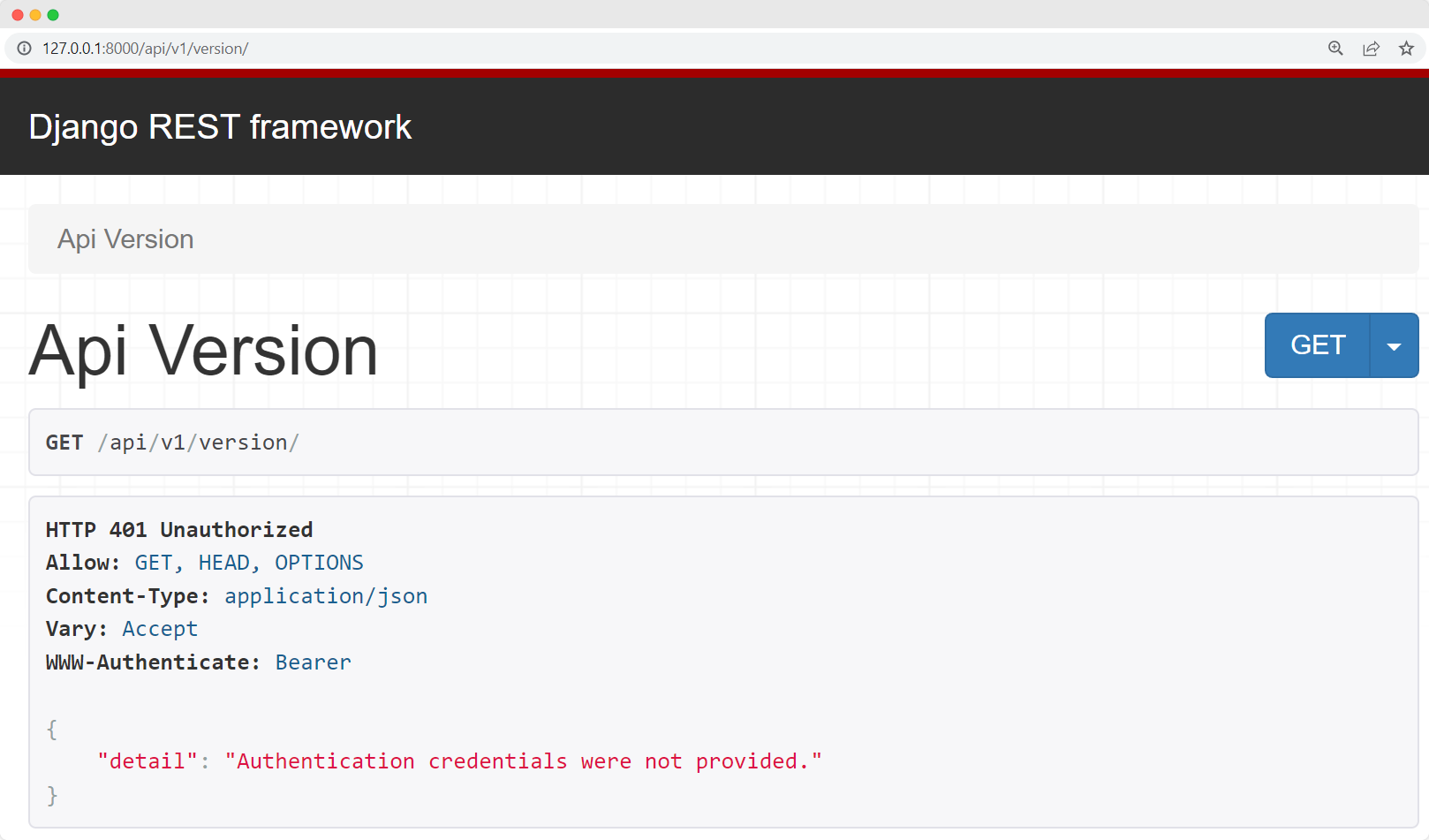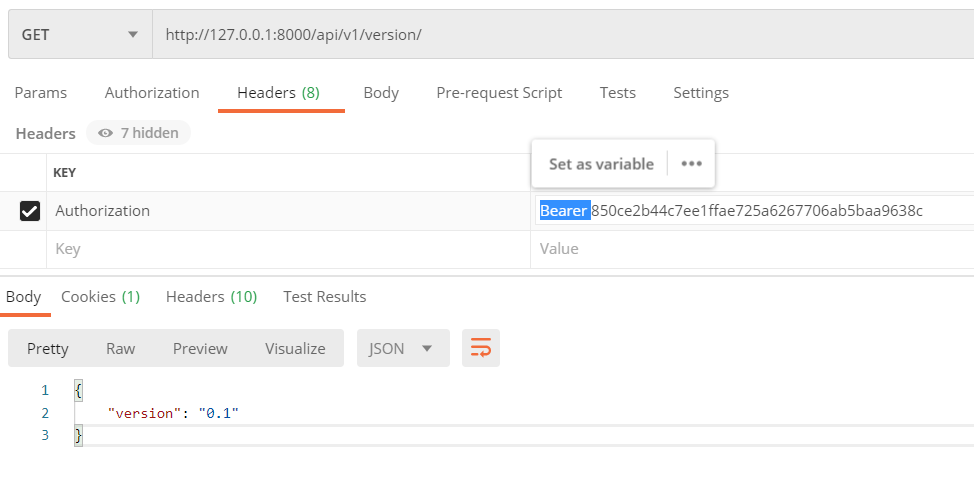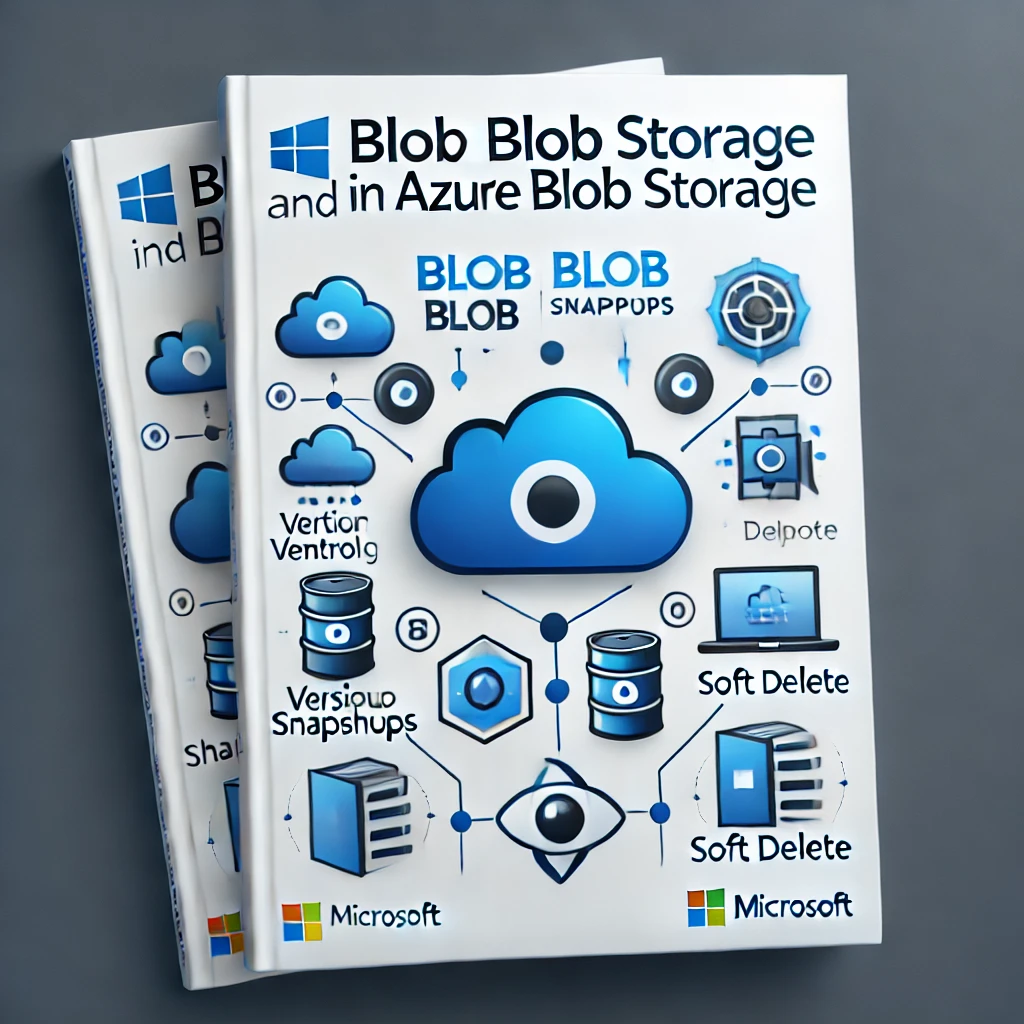How to Implement Token Authentication using Django REST Framework

Setup the Rest API Project
Step 1 : Install Django and Django Rest Framework
pip install django
pip install djangorestframework
Step2. Create Django Project
django-admin startproject TokenAuthentication
Step3. Navigate to folder TokenAuthentication
cd TokenAuthentication
Step4. Start a new app
python manage.py startapp authenticationdemo
Step5. Add app to INSTALLED_APPS
The authentictiondemo (app that you created) and rest_framework (app that you installed) should be included in INSTALLED_APPS inside settings.py module.
1
2
3
4
5
6
7
8
9
10
11
12
13
14
15
16
INSTALLED_APPS = [
'django.contrib.admin',
'django.contrib.auth',
'django.contrib.contenttypes',
'django.contrib.sessions',
'django.contrib.messages',
'django.contrib.staticfiles',
# Third party apps
'rest_framework',
# Local apps
'authenticationdemo'
]
Step6. Migrate the database
Run the command below from project root.
python manage.py migrate
Step7. Create Test API
Inside TokenAuthentication/authenticationdemo/views.py
1
2
3
4
5
6
7
8
from rest_framework.response import Response
from rest_framework.views import APIView
class APIVersion(APIView):
def get(self, request, \*args, \*\*kwargs):
return Response({
'version': "0.1"
})
Step8. Register Path
Inside TokenAuthentication/urls.py
1
2
3
4
5
6
7
from django.contrib import admin
from django.urls import path, include
urlpatterns = [
path('admin/', admin.site.urls),
path('api/v1/', include('authenticationdemo.urls')),
]
Inside authenticationdemo/urls.py
1
2
3
4
5
6
from django.urls import path
from .views import APIVersion
urlpatterns = [
path('version/', APIVersion.as_view())
]
Step9. Check Endpoints
We have an endpoint /api/v1/version/ where we can perform GET request. We can use browser to consume our API accessing the URL http://127.0.0.1:8000/api/v1/version/

Step10. Implement Permission to Protect API
Inside TokenAuthentication/settings.py
1
2
3
4
5
REST_FRAMEWORK = {
'DEFAULT_PERMISSION_CLASSES': [
'rest_framework.permissions.IsAuthenticated'
]
}
It we want to set a global permission class to all of our endpoints then we can use default permission. But if we want to protect our only specific view then we can define our permission class like this.
Inside TokenAuthentication/authenticationdemo/views.py
1
2
3
4
5
6
7
8
9
10
from rest_framework.permissions import IsAuthenticated
from rest_framework.response import Response
from rest_framework.views import APIView
class APIVersion(APIView):
permission_classes = [IsAuthenticated, ]
def get(self, request, *args, **kwargs):
return Response({
'version': "0.1"
})
Now, if we try to access the endpoints

Step11. Implement Token Authentication
Add rest_framework.authtoken in INSTALLED_APPS inside TokenAuthentication/settings.py and include TokenAuthentication to REST_FRAMEWORK.
1
2
3
4
5
6
7
8
9
10
11
12
13
14
15
16
17
18
INSTALLED_APPS = [
'django.contrib.admin',
'django.contrib.auth',
'django.contrib.contenttypes',
'django.contrib.sessions',
'django.contrib.messages',
'django.contrib.staticfiles',
# Third party apps
'rest_framework',
'rest_framework.authtoken',
# Local apps
'authenticationdemo'
]
REST_FRAMEWORK = {
'DEFAULT_AUTHENTICATION_CLASSES': [
'rest_framework.authentication.TokenAuthentication'
]
Migrate the database again to create the table that stores token.
python manage.py migrate
Step12. Token Request API
Since the user is unable to access our endpoints. We need API that provides user token.
Inside *authenticationemo/urls.py
1
2
3
4
5
6
7
8
from django.urls import path
from rest_framework.authtoken import views # added views
from .views import APIVersion
urlpatterns = [
path('login/', views.obtain_auth_token), # added login url here
path('version/', APIVersion.as_view())
]
Now create super user. Run the command below on project root.
python manage.py createsuperuser
You will be asked for username and password. I will be using username as admin and password as admin.

Now request for login with above superuser credential on URL http://127.0.0.1:8000/api/v1/login/

Note: We can also customize obtain_auth_token view. Please refer to official django rest framework documentation for more details on customizing obtain_auth_token view. CustomAuthToken)
Now request API with token on the header

Extra Tips
If we want to use Bearer instead of Token. Create a file bearer.py in TokenAuthentication.
Inside TokenAuthentication/bearer.py
1
2
3
4
5
from rest_framework import authentication
class BearerAuthentication(authentication.TokenAuthentication):
keyword = "Bearer"
Inside TokenAuthentication/settings.py
1
2
3
4
5
REST_FRAMEWORK = {
'DEFAULT_AUTHENTICATION_CLASSES': [
'TokenAuthentication.bearer.BearerAuthentication',
]
}
Now it will accept Bearer instead of Token.






Leave a comment